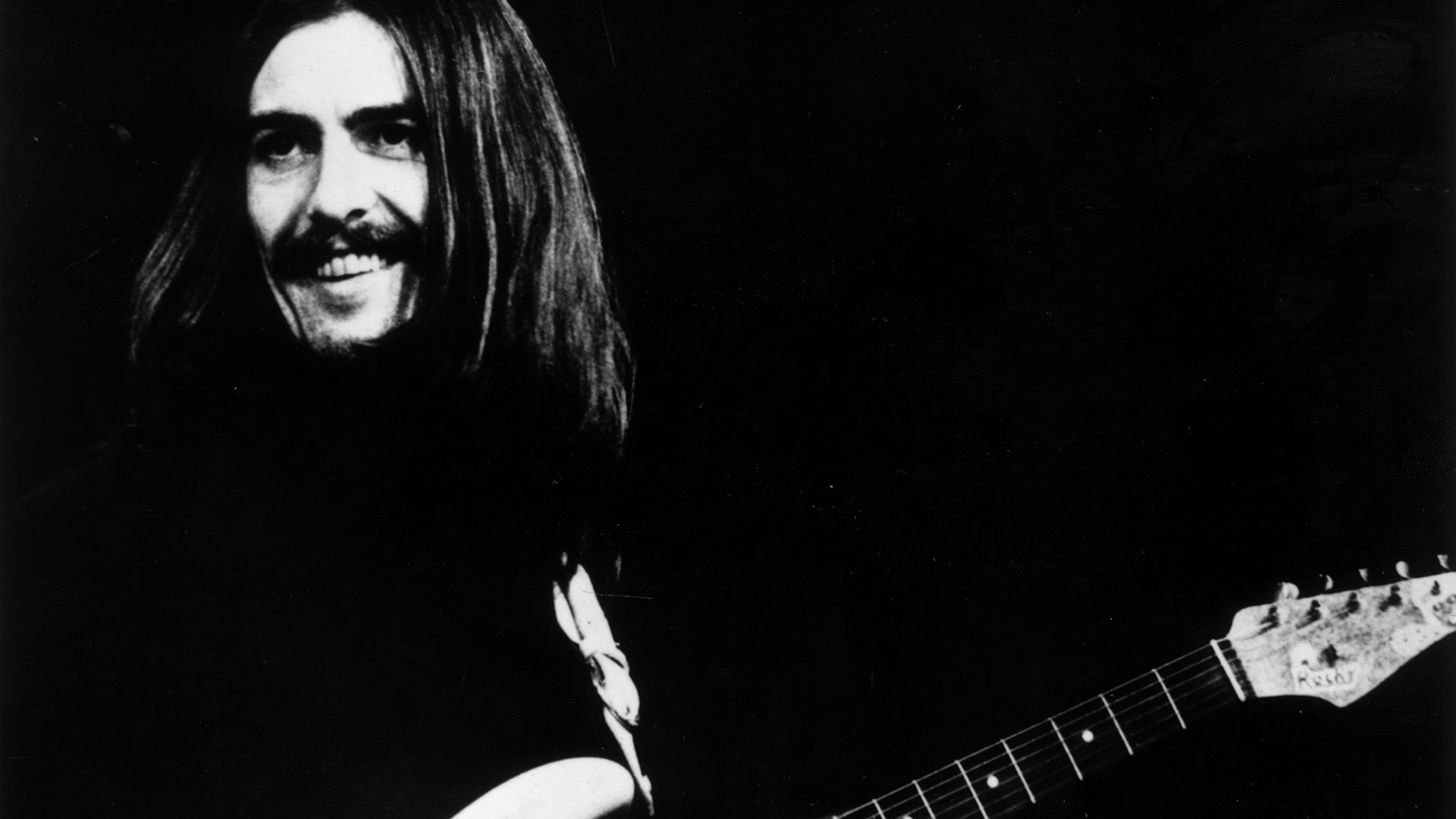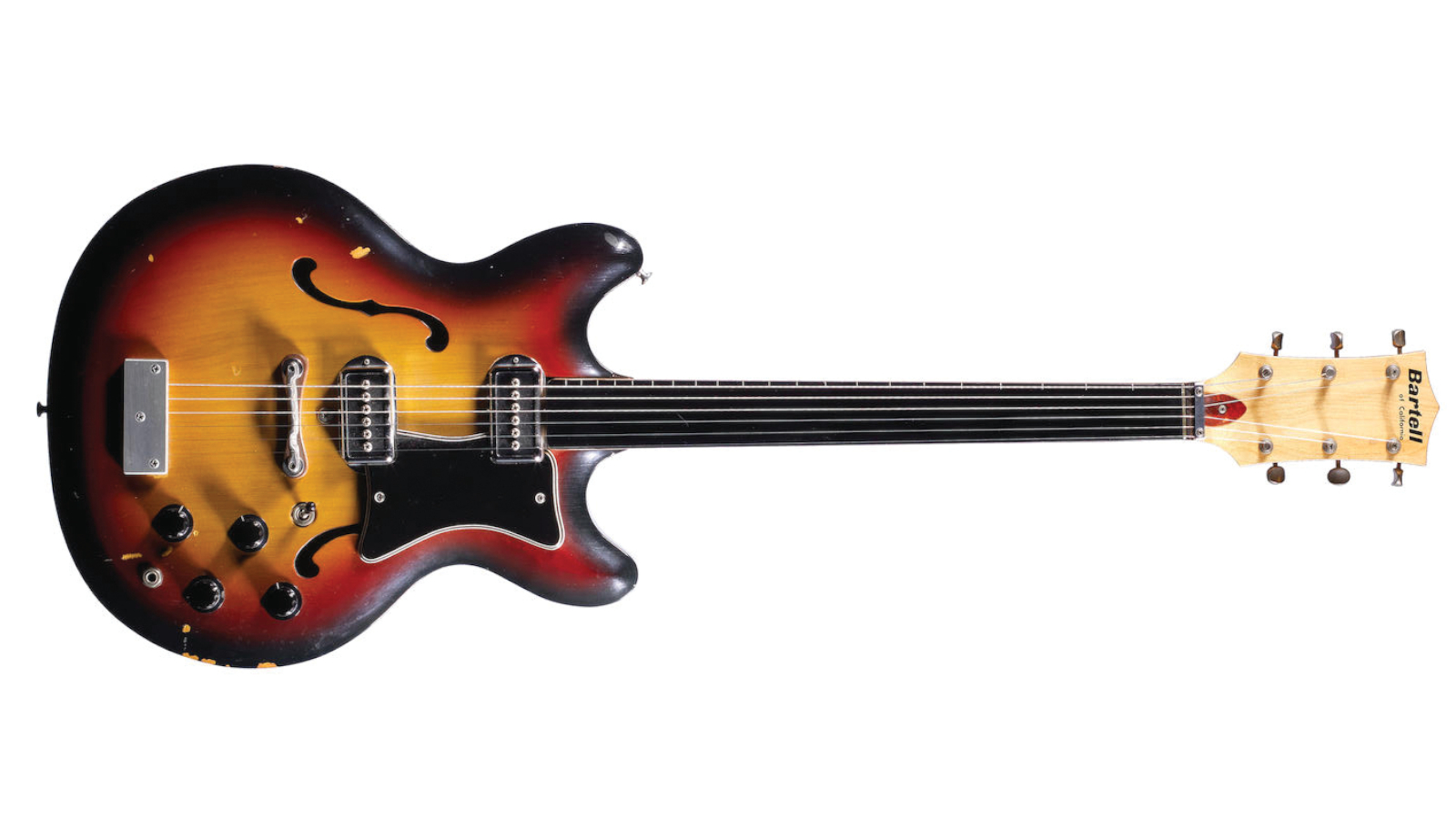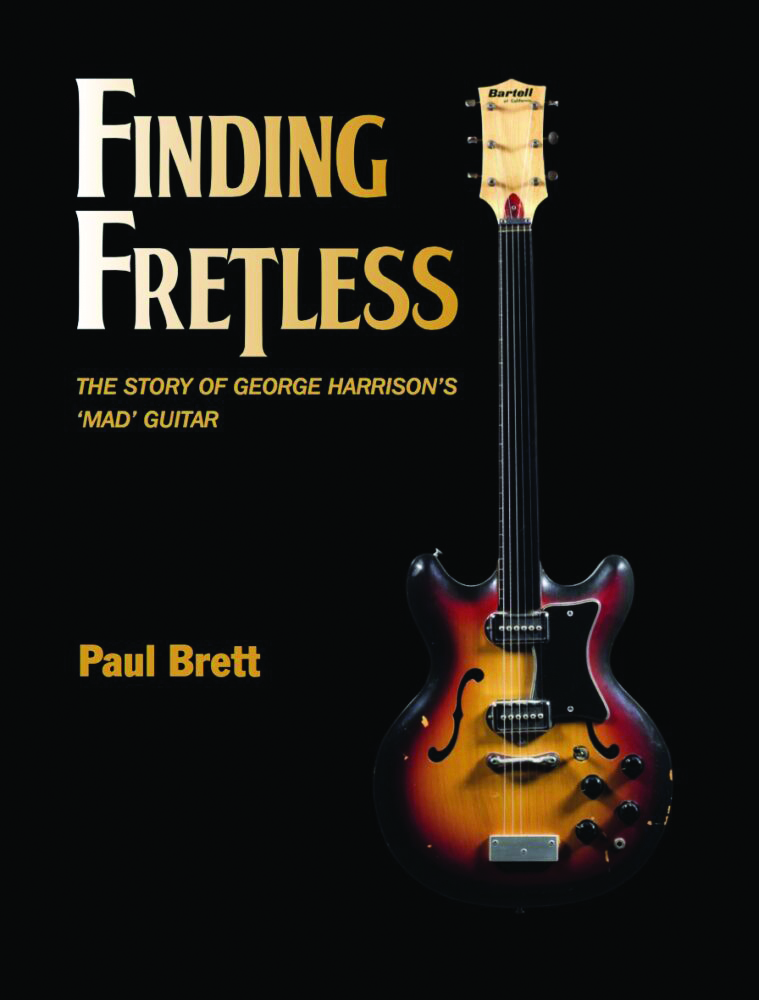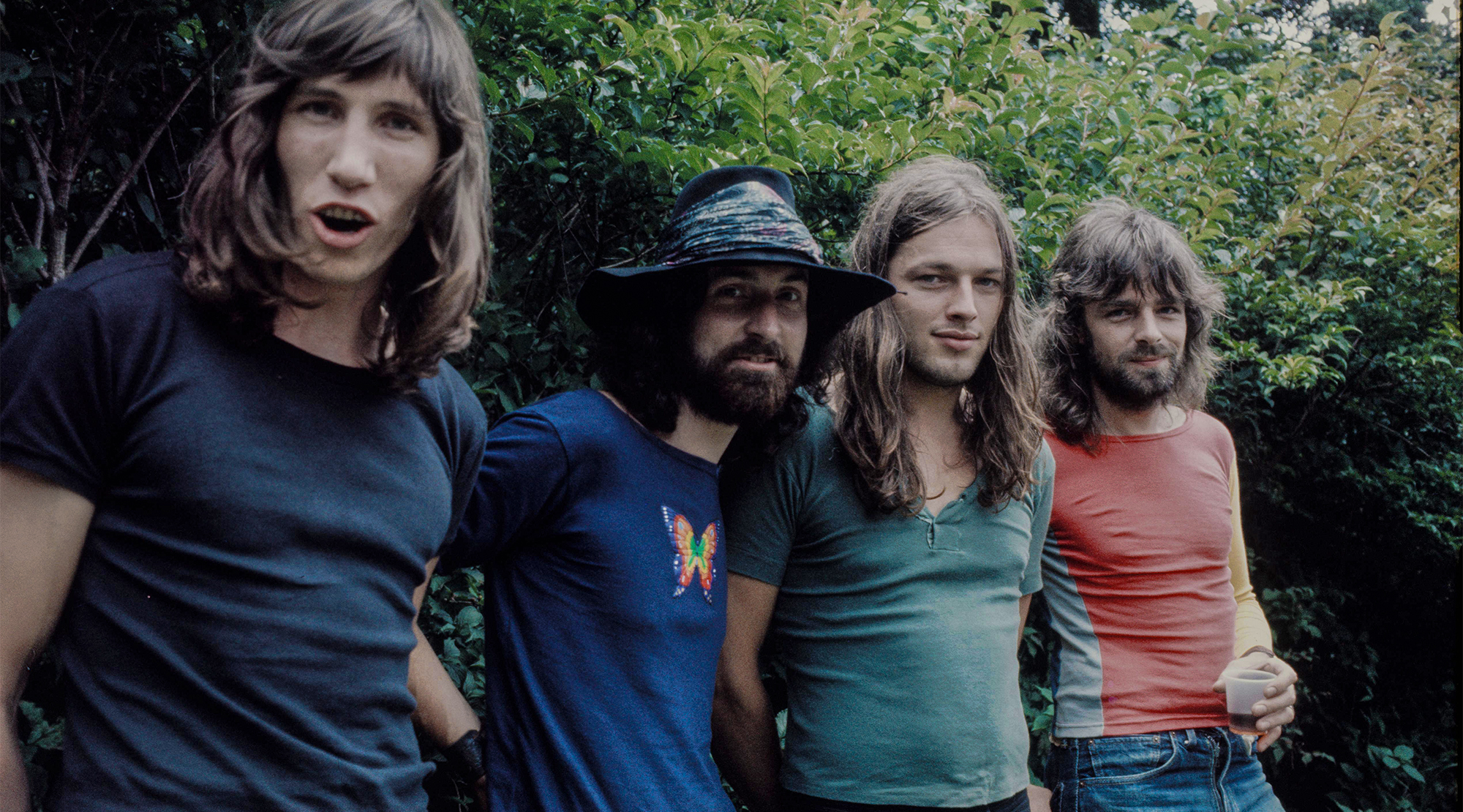“It took me months of searching through tens of thousands of photos. And there we had it: George Harrison at home with his collection of guitars.” An unusual guitar is at the center of a mystery about the Beatles' White Album
The rare fretless guitar appears to have been used on "Happiness Is a Warm Gun" and "Helter Skelter"

More than 50 years since their breakup, the guitars used by the Beatles on their recordings have been thoroughly cataloged.
Except for one.
Five years ago, an amateur sleuth named Paul Brett discovered an odd guitar entered into the Beatles’ studio history in the months before they recorded their famous, eponymously titled "White Album," in 1968. Since then, clues have revealed that the guitar — previously unknown as a Beatles instrument — may have made at least two appearances on the record.
The guitar is an unusual prototype fretless electric guitar built by the short-lived U.S. Bartell company. It entered Beatles history through George Harrison, while he was staying at 1567 Blue Jay Way in Los Angeles in August 1967. The home is famous as the place where Harrison wrote “Blue Jay Way,” the haunting track from 1967’s Magical Mystery Tour, while waiting for the arrival of Beatles press officer Derek Taylor, who’d lost his way in the fog.
It was Brett who learned that on August 3, while in Hollywood, Harrison and Beatles assistant Neil Aspinall attended a recording session where a session guitarist named Mike Deasy was playing one of Bartell’s prototype hollow-bodied fretless guitars. Harrison spoke with Deasy about the instrument for 20 or 30 minutes before leaving. Afterward, Aspinall reportedly ordered a fretless guitar from Al Casey’s Music Room retail outlet in Hollywood.

It’s certain that the Bartell fretless made it to Abbey Road Studio. The guitar is documented in Beatles history through British DJ Kenny Everett’s recorded interview with John Lennon.
Their chat took place at Abbey Road Studio on June 6, 1968, shortly after the Beatles began recording the White Album. Lennon is playing the guitar, which can be heard on the recording, below. “What kind of guitar is that?” Everett asks at one point. “Very strange looking.” Replies Lennon, “A fretless guitar.”
All the latest guitar news, interviews, lessons, reviews, deals and more, direct to your inbox!
“We know it was the Bartell, ’cause it’s the only one they had,” Brett tells Guitar Player. From talking with others who knew Harrison, he learned that Lennon was more intrigued by the guitar than Harrison was. “He was more likely to pick it up and mess around with it when they were looking for a particular sound or effect.”
But was the fretless guitar ever used on a recording by the Beatles?
No documentation exists to support the notion, but Brett and others familiar with the tonal character of the instrument are convinced it appears on two White Album tracks: “Happiness Is a Warm Gun,” where Brett believes it was used to perform the rubbery descending lick that precedes the lyric “I need a fix ’cause I’m going down”; and “Helter Skelter,” where it would have been used along with other guitars.
Brett says the sound of a fretless guitar is present and more apparent on the second take of “Helter Skelter,” a version clocking in at 12 minutes and 54 seconds, some four and a half minutes of which appear on Anthology 3.
“The suggestion is that it may have been used on others, mainly for overdubs, not as the lead guitar or the main instrument,” he says. “But you can certainly pick it out, because it is so unique.”
Though his research had proved where and how Harrison received the guitar, Brett was frustrated that he could find no photo of the instrument among pictures of the Beatles. But eventually his painstaking efforts paid off.
“It took me months of searching through tens of thousands of photos,” he says. “And there we had it: George Harrison at home with his collection of guitars.” The photo, taken some time in the 1970s, shows Harrison in a room at his Friar Park estate surrounded by mostly acoustic guitars. “And there it is right at the back next to him,” Brett reveals.

After years of owning the guitar, Harrison gifted it to his friend veteran jazz-fusion guitarist Ray Russell in 1985. In March 2020, the instrument was featured on Antiques Roadshow, where it was valued at £400,000. Russell was unprepared to own and maintain an instrument of such value and put it up for auction.
On October 13, 2020, this least-famous Beatles guitar went on Bonhams’ auction block, where it fetched a more conservative, but no less impressive, bid of £190,000 — roughly a quarter of a million dollars.
As for Brett, he chronicled the guitar’s history in his book Finding Fretless: The Story of George Harrison’s Mad Guitar (This Day in Music Books). He was subsequently nominated by the Association for Recorded Sound Collections Awards (ARSC) to receive its 2022 award for Excellence in Historical Recorded Sound Research.
Christopher Scapelliti is editor-in-chief of GuitarPlayer.com and the former editor of Guitar Player, the world’s longest-running guitar magazine, founded in 1967. In his extensive career, he has authored in-depth interviews with such guitarists as Pete Townshend, Slash, Billy Corgan, Jack White, Elvis Costello and Todd Rundgren, and audio professionals including Beatles engineers Geoff Emerick and Ken Scott. He is the co-author of Guitar Aficionado: The Collections: The Most Famous, Rare, and Valuable Guitars in the World, a founding editor of Guitar Aficionado magazine, and a former editor with Guitar World, Guitar for the Practicing Musician and Maximum Guitar. Apart from guitars, he maintains a collection of more than 30 vintage analog synthesizers.


